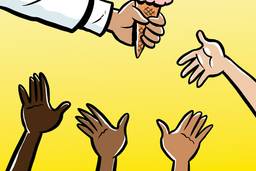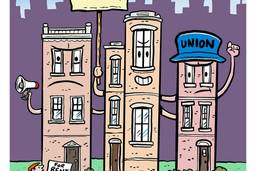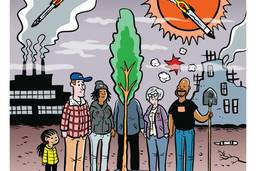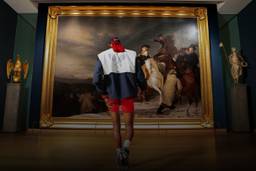Portrait of the Environmentalist as a Young Arsonist
Abby Geni’s new novel, The Wildlands, explores means and ends in the fight for animal and Earth liberation.
Dayton Martindale
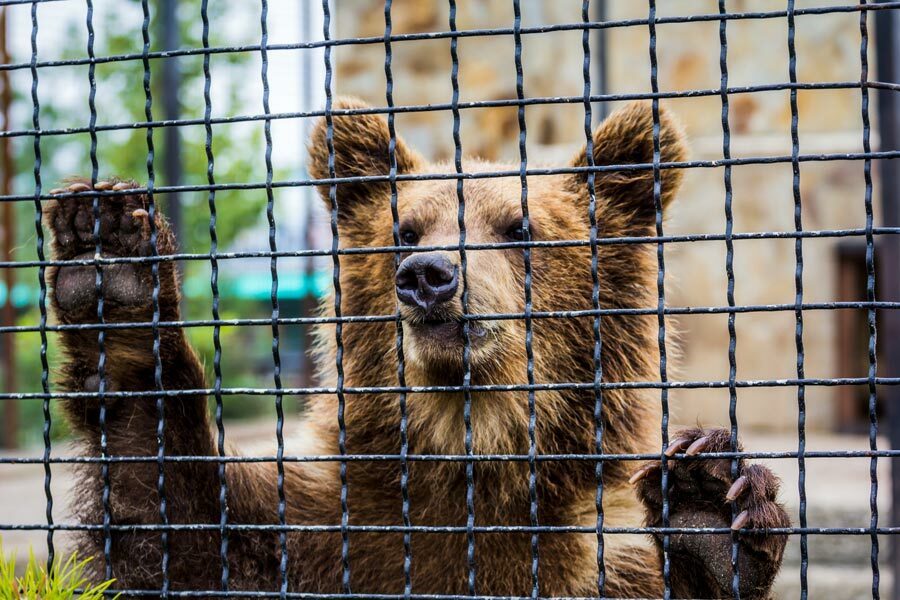
Nearly every day, someone takes underground action in the name of animal or Earth liberation. In July, Chilean activists set rats and frogs free from a lab at the Metropolitan University of Educational Sciences. In August, anti-zoo anarchists set fire to the ticket booths of the Peaugres Safari park in central France, shutting it down for a day.
To the FBI, these are terrorist acts, a top-ranked threat. But for those concerned about domestic animals, endangered species and ecosystems, the question is more complicated. The number of chickens slaughtered in the United States exceeded 9 billion in 2017. Vertebrate wildlife populations have fallen by more than half since 1970, and climate change is poised to accelerate this trend. Meanwhile, Trump and the GOP are weakening regulations that protect threatened species. Marches and petitions have begun to feel inadequate; in 2013, even the Sierra Club turned to civil disobedience.
Into this moral quandary steps author Abby Geni. In her highly anticipated new novel, The Wildlands, a young man enlists in the “war between human beings and animals” — on behalf of the animals.
Six years after their mother’s death, the McCloud siblings lose their home, farm animals and father to a tornado that rips through the small town of Mercy, Okla. Eighteen-year-old Darlene and 17-year-old Tucker agree to raise their two younger sisters themselves. But for Tucker, the tornado has triggered a moral crisis: The destruction of his home becomes a metaphor for the impact of industry on the animal world. He runs away, joins a radical green group and soon has a rap sheet including vandalism, arson and a slaughterhouse bombing. Three years later, he returns and invites his 9-year-old sister, Cora, to join him.
The Wildlands alternates between two views of Tucker: Cora’s adoring yet often unnerved perspective and Darlene’s resentfulness, which Geni uses to cast a critical eye on Tucker’s distinctly male selfishness. He has “always been good at getting other people to take care of him,” Darlene says. She worries he’ll forget to feed Cora, fasten her seatbelt, brush her teeth. Her worries prove founded: Tucker loves his sister but puts the cause first. They spend weeks hiding in a basement, driving Cora stir-crazy; she is thrown into dangerous situations, and her health needs go unmet.
Over Cora’s protests, Tucker cuts her hair and, to complete the disguise, begins calling her his brother Corey. Consciously or not, Tucker reinforces Darlene’s judgment that running around setting things on fire is something men do. Women are busy putting food on the table.
Nearly every real-life political movement has seen a similar dynamic, with women doing behind-the-scenes work and men making headlines. In animal advocacy, women are the vast majority of vegans and activists, while the underground rescue and eco-sabotage cultures are notably more masculine (although plenty of women pursue direct action, too). These militants have advanced a narrative of a passive, feminized nature in need of rescue since at least Edward Abbey’s The Monkey Wrench Gang. The influential 1975 novel is dripping in machismo, featuring a hypermasculine Vietnam vet defending a “semi-virginal” wilderness.
It’s this machismo that Geni deconstructs, challenging readers to consider more deeply how our actions affect those around us. It’s notable that she doesn’t show us Tucker’s perspective, focusing instead on those he causes pain.
Geni also offers a less passive vision of nature: Coyotes are “shy and clever”; horses run with “intensity and purpose”; animals consider their surroundings, communicate, make choices. In zoos, they lose their minds.
Such a vision of nature, dismissed by most scientists until Jane Goodall, has primarily been the province of children’s stories and myth. The Wildlands borrows from both: an existential battle for the future of life, seen through the eyes of a child. In an age of mass extinction, Geni suggests, we need new narratives to grapple with a crisis that can sometimes feel too big to wrap our heads around.
If The Wildlands is something like a fairy tale, does it have a moral? Nothing quite so pat. But perhaps we can combine the best of Tucker with the best of Darlene: a humble respect for the vulnerable, a resolve to fight for all life — and a commitment to love and support one another, through fire and storm.
Dayton Martindale is a freelance writer and former associate editor at In These Times. His work has also appeared in Boston Review, Earth Island Journal, Harbinger and The Next System Project. Follow him on Twitter: @DaytonRMartind.


